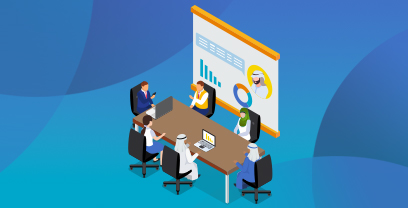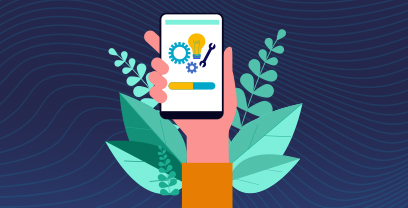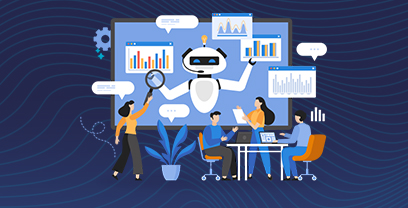Introduction
In the intricate web of supply chain management, the distinction between sourcing and procurement plays a pivotal role in shaping an organization’s approach to supplier selection and purchasing.
Out of the procurement leaders surveyed in a report by Ivalua and Forrester, 79% said that Procurement is being asked to support more business objectives than it was just a few years ago. Understanding the nuances between sourcing — the strategic process of identifying and engaging suppliers — and procurement — the operational process of acquiring goods and services — is crucial.
Our latest blog takes a closer look at the comprehensive analysis of sourcing vs procurement, highlighting their impact on supplier selection, cost optimization, and the overall efficiency of purchasing activities. By exploring their distinct roles, responsibilities, and contributions to supply chain management, we aim to offer valuable insights into how organizations can navigate the complex dynamics of supplier interaction and purchasing to achieve sustainable business success.
For Starters: What Is Sourcing?
Sourcing refers to the strategic process of identifying, evaluating, and engaging with suppliers for the acquisition of goods and services needed by an organization. It’s a critical component of the procurement process that directly influences the quality, cost and reliability of the products and services an organization needs.
Sourcing involves market research, vendor comparison, negotiations, supplier risk, performance, and relationship management, as well as contract management. By carefully selecting suppliers, companies aim to create strong, mutually beneficial relationships that can offer competitive advantages, innovation, and reduced risk in their operations.
And NOW: What Is S2C?
Source-to-Contract (S2C) is a critical subset of the broader S2P process, focusing on the early stages of procurement from identifying sourcing needs to finalizing contracts with suppliers. The S2C process is central to strategic procurement, emphasizing supplier management, negotiation and contracting to ensure that an organization secures the best possible value from its suppliers.
Here’s a closer look at the key stages within the Source-to-Contract cycle:
- Identify Need: The process begins with the identification of a need within the organization. This might be a requirement for goods, services, or works that are essential for the company’s operations.
- Spend Analysis: Analyzing past spending data to understand where money is being spent, with whom and on what.
- Market Research: Researching potential suppliers, market conditions and trends that could affect sourcing strategies..
- RFx Process: IncludesRequest for Information (RFI), Request for Proposal (RFP), Request for Quotation (RFQ) processes, and Auctions. The aim is to gather detailed information, proposals or quotes from potential suppliers.
- Supplier Evaluation and Selection: Assessing potential suppliers based on criteria such as cost, quality, capacity, reliability, risk, performance, and sustainability practices.
- Negotiation: Engaging in negotiations with potential suppliers to agree on terms, prices, delivery schedules, quality standards and other contract details.
- Contracting: Finalizing the agreement with the chosen supplier(s) through a formal contract.
- Supplier Performance Management: Monitoring supplier performance against contract terms from the outset can ensure compliance and foster continuous improvement.
The S2C process is strategic and requires coordination across multiple departments within an organization, including procurement, finance, operations and legal. Successful S2C processes are supported by digital procurement software and tools for sourcing, contract management, supplier management and analytics.
What Is Procurement?
Broadly speaking, Procurement is the comprehensive process employed by organizations to acquire goods and services from external sources. It encompasses a wide range of activities including identifying needs, sourcing and selecting suppliers, negotiating contracts, purchasing, managing orders, conducting quality inspections and overseeing the logistics of delivery and payment.
The primary aim of procurement is to obtain materials, services and equipment required for daily operations at the best possible cost, quality, and reliability, to create value for the organization. Procurement is a key component of supply chain management and plays a critical role in controlling and reducing costs, ensuring product quality and maintaining strong supplier relationships, all of which contribute to the overall competitiveness and efficiency of an organization.
While strategic sourcing, a critical activity of the procurement organization, shifts the focus from reactive purchasing to a proactive analysis of spending patterns, supplier markets and total cost of ownership. It’s a holistic approach that seeks to create long-term, collaborative relationships with suppliers capable of delivering significant value to the organization.
By aligning purchasing decisions with business strategies, strategic sourcing emphasizes not just cost savings but also the quality, reliability and innovation that suppliers can bring. It requires cross-functional collaboration within the organization and a deep understanding of both the internal needs and the external supply market.
What is Procure-to-Pay?
Procure-to-Pay (P2P) is the end-to-end process within an organization’s procurement function, starting from the procurement of goods and services to processing the supplier’s payment. This comprehensive workflow integrates various stages of procurement activities to streamline operations, enhance cost-effectiveness and foster strong supplier relationships.
The journey begins with the creation of a purchase requisition, an internal document that specifies the need for goods or services. This requisition must receive approval from designated authorities within the organization to ensure alignment with budgetary controls and policies. Following approval, a purchase order (PO) is generated and sent to the selected supplier, detailing the order specifics, including quantities, prices and terms.
Upon receiving the ordered goods or services, the organization conducts a thorough review to verify accuracy and quality, ensuring the delivery matches the PO and initial requisition. The supplier, in turn, issues an invoice for the delivered goods or services, which the organization must validate against the PO and delivery documentation before approval. The final stage sees the approved invoice processed for payment according to the established terms, concluding the P2P cycle.
Throughout this process, the seamless flow of information and coordination among the purchasing department, receiving department, accounts payable and the supplier is critical. Automation and procure-to-pay software platforms can significantly enhance the efficiency and accuracy of these operations, providing organizations with real-time procurement insights and optimizing the overall procurement strategy.
Read our blog post for a better understanding of the differences between S2P and P2P.
Next Up: What is S2P?
Source-to-Pay (S2P) is an integrated process that encompasses all activities involved in the procurement of goods and services, from identifying needs and sourcing suppliers to making payments. A strong S2P process is the foundation for effective supply chain management and spans several key stages:
- Supplier Management: Includes onboarding suppliers, collecting and maintaining data related to their business and capabilities for the purpose of development and ongoing management of the relationship, such as compliance, KPI, collaboration, opportunity identification, etc..
- Sourcing: Identifying potential suppliers and negotiating contracts to secure goods and services at the best possible prices and terms.
- Contracting: The process of authoring, negotiating, executing (signing), and managing and monitoring the lifecycle and compliance to a contract (e.g., obligations), and finally the renewal or termination.
- Procurement (or Purchasing): Formalizing the purchase of goods or services through the issuance of Purchase Orders (POs) based on the contracts negotiated during the sourcing phase.
- Receiving: Accepting delivery of goods and services, verifying that what was ordered has been received in the correct quantities and meets the specified quality standards.
- Invoice Reconciliation: Matching received invoices against POs and goods receipt documents to ensure accuracy before processing payment.
- Payment: Executing the payment to suppliers according to agreed-upon terms in the contract, completing the procurement cycle.
- Spend Analysis: Includes the collection, cleansing, and classification of spend data so it can be more easily analyzed to discover sourcing opportunities and monitored for compliance.
Throughout these stages, data is collected and analyzed to inform decision-making, identify opportunities for cost savings and ensure compliance with internal and external policies and regulations. Technology plays a critical role in the S2P process, with procurement software and Enterprise Resource Planning (ERP) systems automating and facilitating many of the tasks.
A few more S2P Tips! Read this blog for a comprehensive guide to Source-to-Pay.
How Do Sourcing and Procurement Activities Work Together?
When sourcing and procurement are in sync, organizations will benefit from:
- Cost Efficiency: Effective sourcing strategies can identify suppliers who offer competitive pricing, but it is through streamlined procurement processes that these cost benefits are fully realized. By ensuring that purchases are made efficiently and in compliance with negotiated contracts, organizations can avoid overspending and maximize cost savings.
- Quality Improvement: Sourcing ensures that suppliers capable of delivering high-quality goods and services are selected. In tandem, procurement verifies that the goods received meet the established quality standards. This close collaboration ensures a consistent supply of high-quality materials, contributing to better end products and customer satisfaction.
- Risk Mitigation: By working together, through the sourcing and procurement processes, team members can better assess and manage risks associated with suppliers, such as financial instability, supply chain disruptions, or non-compliance with regulations. This proactive approach to risk management helps prevent potential issues and ensures business continuity.
- Enhanced Supplier Relationships: Sourcing establishes the framework for long-term relationships with suppliers through negotiation and contract management. Procurement builds on these relationships through regular interactions and performance management. Together, they can foster strong, collaborative relationships with suppliers, leading to improved service levels, innovation, and potential for preferential treatment.
- Operational Efficiency: Synchronization between sourcing and procurement streamlines the end-to-end purchasing process, reducing duplication of effort and enhancing speed. This can lead to faster time-to-market for products and services, improving the organization’s competitive edge.
- Strategic Alignment: When sourcing and procurement are aligned, they can more effectively contribute to the strategic goals of the organization, such as sustainability initiatives or cost leadership. This alignment ensures that purchasing decisions support broader business objectives, enhancing overall strategic coherence.
In November 2022, Ivalua commissioned Forrester Consulting to evaluate the role of procurement amid today’s volatile business environment. Forrester’s online survey drew responses from 470 procurement leaders at organizations with at least 1,000 employees across various industries.
According to Forrester, procurement plays a critical role in driving business growth and success. However, competing priorities create challenges. To avoid supply chain disruptions, 76% of respondents said they compromised on supplier due diligence, while 73% compromised on other objectives.
Increased collaboration with suppliers is necessary, and procurement leaders are turning to technology for help, investing in specialist supplier risk and performance management (SRPM) solutions or broader supplier value management (SVM) suites. Read the full Forrester report.
What Are the Differences between Sourcing and Procurement?
Procurement and sourcing are often used interchangeably due to their overlapping responsibilities within the supply chain; both procurement and sourcing deal with obtaining goods and services for an organization.
Sourcing is primarily concerned with identifying and selecting suppliers based on various criteria, while procurement encompasses the entire process of acquiring those goods and services, from ordering to payment. Given that sourcing is a critical initial step in procurement, the activities are closely linked, leading to the terms being used interchangeably in some contexts.
The table below summarizes some key differences between Procurement and Sourcing:
| Sourcing | Procurement | |
| Focus Areas and Objectives | Identifying, evaluating, and selecting suppliers based on criteria such as cost, quality, and reliability to build a strong supply base that meets the company’s standards and needs. | Acquiring goods and services to meet the needs of the organization at the best possible price, ensuring quality and timely delivery. |
| Roles and Responsibilities within Organizations | Strategic selection of suppliers and negotiation of contracts that will govern future transactions. Roles might include sourcing managers or strategic sourcing specialists, focusing on market research, supplier development, and cost negotiation. | Involves the operational aspect of fulfilling the organization’s needs for goods and services. Roles might include procurement officers or purchasing managers, focusing on purchase order processing, supplier management, and contract compliance. |
| Impact on Supply Chain Management Efficiency | Has a direct impact on the cost-efficiency and sustainability of the supply chain by securing reliable suppliers and favorable terms. Effective sourcing strategies can mitigate risks associated with supply disruptions and market volatility. | Influences operational efficiency and effectiveness in the supply chain by ensuring that goods and services are procured in a timely, cost-effective manner. Procurement activities directly affect inventory levels, quality control, and the overall smooth operation of the supply chain. |
Benefits of Automating Procurement Operations
Risk & Supplier Performance Management
Through automation, organizations can monitor and evaluate their suppliers in real-time, identifying potential risks and performance issues before they become problematic. This proactive approach allows for quicker response times to supply chain disruptions, ensuring continuity and stability.
Automated systems provide detailed analytics and reporting capabilities, as well, for insights into supplier performance trends over time. Companies can use these insights to make data-driven decisions regarding their supplier relationships, optimize their supply chain operations, and enhance overall efficiency.
By improving visibility and control over supplier performance and risk, procurement automation supports stronger, more resilient supply chains. Read our blog post to learn more about how automating Procurement reduces risk and enables effective supplier performance management.
Low-Code/No-Code Automation
The advent of no-code/low-code platforms in procurement automation is a game-changer, offering significant benefits by democratizing the ability to develop and deploy digital solutions. This innovative approach enables procurement teams, regardless of their technical expertise, to create and customize applications that streamline their processes, from supplier onboarding to contract management and invoicing.
The flexibility and ease of use of no-code/low-code procurement platforms mean that procurement organizations can rapidly adapt to changing business needs, implement process improvements, and resolve bottlenecks without waiting for IT department intervention. This agility results in more efficient operations, reduced costs and the ability to focus more on strategic tasks rather than being bogged down by manual processes or system limitations. By empowering procurement teams to take charge of their digital transformation, no-code/low-code platforms accelerate innovation and drive significant improvements in procurement efficiency and effectiveness.
Spend Visibility
By automating the procurement process, organizations gain real-time access to comprehensive data on their spending patterns, supplier contracts and purchasing compliance. This level of detail helps identify cost-saving opportunities while helping teams adhere to budgets, ensure contract compliance, and uncovers potential areas of inefficiency within the procurement cycle. Spend visibility also supports better negotiation with suppliers, enabling companies to optimize their spending, improve cost controls and enhance the overall value derived from their procurement activities.
Spend Compliance and Control of Maverick-Spend
Automation helps companies enforce policy adherence and be sure that purchases align with pre-approved vendors and negotiated contracts. This automated governance minimizes the risk of unauthorized spend and promotes cost-savings by guiding employees towards preferred suppliers and pre-negotiated prices. The detailed insights offered by procurement automation tools allow for real-time monitoring and analysis of spending patterns, identifying deviations from established procurement policies, as well. With a clear overview of procurement activities, organizations can swiftly correct non-compliant behaviors and adjust their procurement strategies accordingly.
Customer Spotlight: Digitally Transforming Procurement at Booking.com
Booking.com is a digital travel platform that provides a wide range of accommodation options, including hotels, vacation rentals, bed and breakfasts, and hostels, along with other travel-related services like flight bookings, car rentals, and airport taxis. The company is part of Booking Holdings Inc., a larger company that is one of the world’s leading providers of online travel and related services.
Using Ivalua’s procurement software, Booking.com has simplified procurement processes, from issuing purchase orders to approving invoices or vendor onboarding, leading to improved compliance and efficiency, and better visibility across procurement processes. With more than 1,200 people using the system, adoption has been high – more than 50% of onboarded vendors have returned to the system more than twice.
Integrated Sourcing and Procurement Strategies for Optimal Performance
In today’s digital age, leveraging technology and automation is paramount for optimizing sourcing and procurement processes. Procurement platforms like Ivalua’s P2P software and Strategic Sourcing Solutions offer comprehensive tools to streamline and enhance efficiency throughout the procurement lifecycle.
Watch a demo of Ivalua’s Procure-to-Pay software.
Through automation, tasks such as supplier onboarding, requisitioning, purchase order management, invoice processing and payment reconciliation can be expedited, reducing manual errors and improving process speed. Additionally, advanced analytics and reporting capabilities offer valuable insights into spending patterns, supplier performance and market trends, empowering organizations to make data-driven decisions and negotiate better terms with suppliers.
Ivalua’s Sourcing Solutions further complement these capabilities by providing robust tools for strategic sourcing activities such as supplier discovery, evaluation and negotiation. With features like e-auctions, bid management and contract management, organizations can efficiently manage the entire sourcing process from identification to contract finalization.
The ability to integrate Ivalua with supplier databases and market intelligence platforms enhances visibility into supplier capabilities and market dynamics, enabling organizations to identify cost-saving opportunities and mitigate supply chain risks.
Ivalua was named a Leader for Source-to-Pay solutions in the 2024 Gartner® Magic Quadrant™ report, mirroring a shift in the market toward a platform-based approach. According to Procurious, 48% of procurement leaders acknowledged this shift.
“As procurement’s remit has expanded from a focus on cost and efficiency to also prioritize sustainability, supply continuity and regulatory compliance, its technological needs have evolved,” said Alex Saric, CMO at Ivalua. “Making rapid, informed decisions during dynamic market conditions requires quick access to information and optimizing among multiple priorities requires 360 degree visibility of suppliers. The easy access to more complete data promised by S2P platforms offers a tremendous advantage over point solutions that further silo organizational data.”
Watch a Demo of Ivalua’s Source-to-Pay software.

Conclusion
Sourcing and procurement, while often intertwined, fulfill separate critical roles within the broader umbrella of supply chain management. Each function is essential, with sourcing focusing on the strategic process of selecting the best possible suppliers and procurement dedicated to maximizing the transactional efficiency of acquiring goods and services.
When businesses deftly harness the power of both sourcing and procurement strategies, they position themselves to secure dependable suppliers, maximize value, and sustain a competitive edge in an aggressive market.
Ivalua stands as a trailblazer with its comprehensive arsenal of tools that span the full spectrum of the procurement lifecycle. It empowers companies to bolster efficiency, slash expenses, and fortify supplier alliances. Beyond driving operational excellence, Ivalua aligns seamlessly with strategic corporate ambitions, cementing its status as an indispensable asset for entities intent on capitalizing on their sourcing and procurement dynamics for superior business outcomes.
Your success hinges on the seamless integration of sourcing and procurement—let us be the catalyst in harmonizing these pivotal processes for your organizational triumph!
Learn more about Ivalua’s comprehensive procurement platform and get started today!




